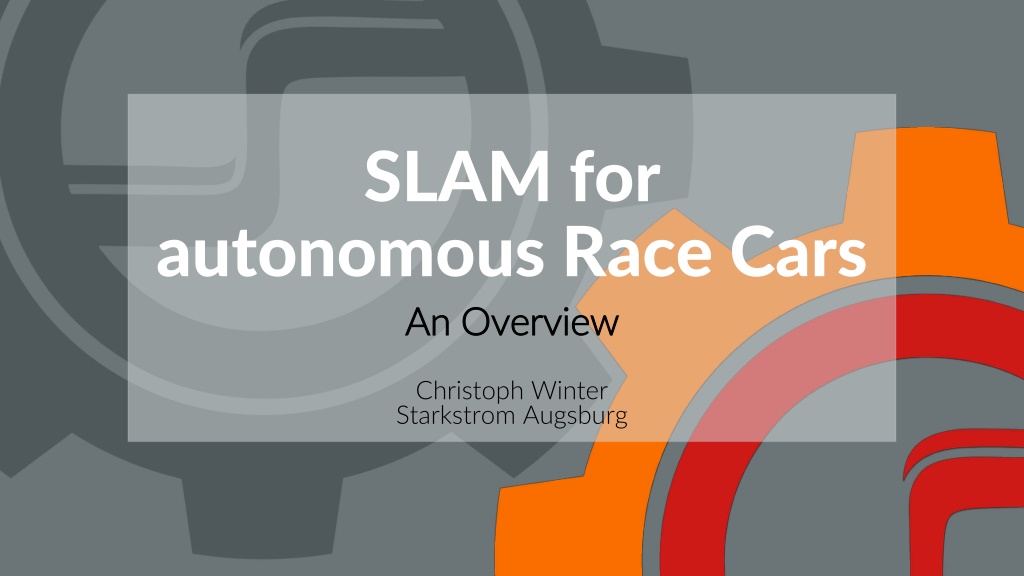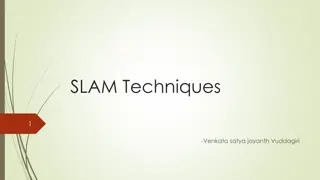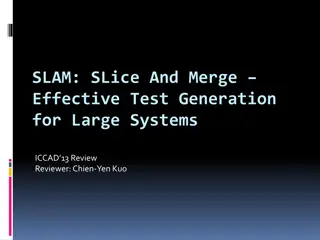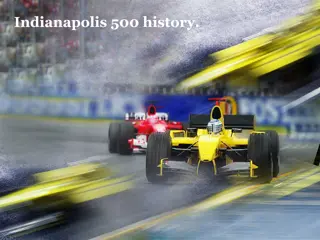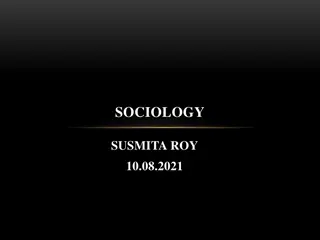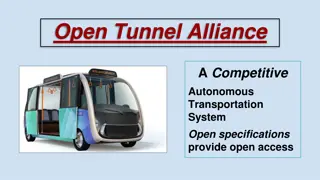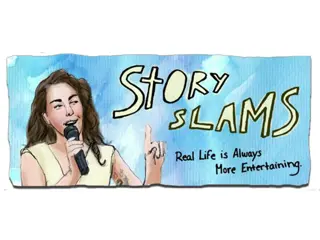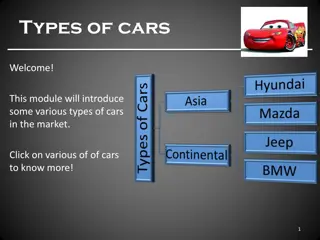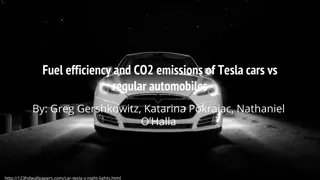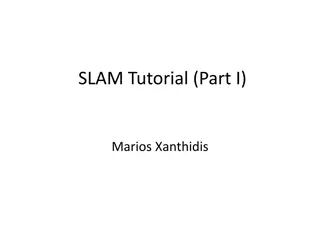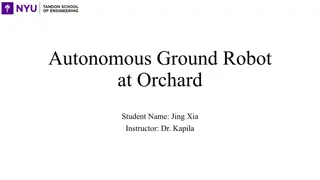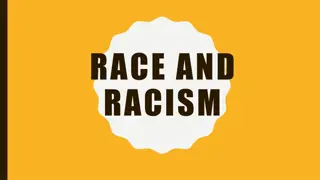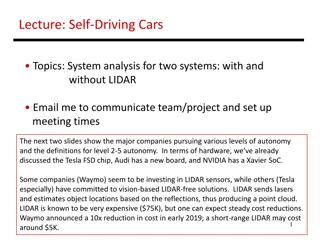Understanding SLAM Technology for Autonomous Race Cars
Dive into Simultaneous Localization and Mapping (SLAM) technology used in autonomous race cars. Explore theoretical overviews, implementation methods like Extended Kalman Filter SLAM and Particle Filter SLAM, terms like scan matching and loop-closing, and popular implementations such as GMapping and ORB-SLAM. Learn about setting up TF frames for accurate mapping and localization. Discover the intricacies of SLAM for creating detailed environmental maps and precise self-localization, essential for autonomous driving systems.
Download Presentation

Please find below an Image/Link to download the presentation.
The content on the website is provided AS IS for your information and personal use only. It may not be sold, licensed, or shared on other websites without obtaining consent from the author. Download presentation by click this link. If you encounter any issues during the download, it is possible that the publisher has removed the file from their server.
E N D
Presentation Transcript
SLAM for autonomous Race Cars An An Overview Overview Christoph Winter Starkstrom Augsburg
1. SLAM? 2. Theoretical Overview 3. Implementations (ROS) 4. Questions / Discussion Outline 28.09.2024 2
SLAM? Simultaneous Localization and Mapping 1. Create a map of the environment Volumetric (Laserscanner, LiDAR) Feature-based 2. Locate yourself relative to that map Fancy algorithms 3. ??? 4. Profit 28.09.2024 3
Theoretical Overview Extended Kalman Filter SLAM Particle Filter SLAM Graph-based SLAM 28.09.2024 4
Terms Scan matching: Matching a Laser Scan onto the map Transform ICP: Iterative Closest Points, a method for scan matching Loop-closing: Perceiving already visited places (e.g. a previous part of the track) Detection of a loop-closing improves SLAM drastically Data-association: Which sensed cone corresponds to which mapped cone? 28.09.2024 5
Extended Kalman Filter SLAM Slides from Cyrill Stachniss http://ais.informatik.uni-freiburg.de/teaching/ws18/mapping/ 28.09.2024 6
Particle Filter SLAM Slides from Cyrill Stachniss http://ais.informatik.uni-freiburg.de/teaching/ws18/mapping/ 28.09.2024 7
Graph-based SLAM Slides from Cyrill Stachniss http://ais.informatik.uni-freiburg.de/teaching/ws18/mapping/ 28.09.2024 8
Implementations GMappping (Grid Map, Particle Filter SLAM) Mobile Robot Programming Toolkit (MRPT) Particle Filter SLAM (Grid Map or Point Map) EKF SLAM (Graph SLAM) Many others: Karto SLAM (Graph-based) ORB-SLAM or LSD-SLAM (uses Camera as input) Hector SLAM 28.09.2024 9
TF Setup Proper TF Setup according to REP-0105 map: Fixed Frame, no drift over time odom: Fixed Frame, can drift over time base_link: attached to the car map odom: published by the SLAM package. Publish as fast as possible! (500-1000 Hz) map base_link: yields position of the car Transform detected cones immediately to the map frame! 28.09.2024 10
GMapping Easy to integrate Works best with LiDAR cone detections as input Hint: Convert (x,y) cone detection to (distance,angle) format to create the LaserScan message Supports Multi-threading with a patch https://github.com/ros-perception/openslam_gmapping/pull/14 28.09.2024 11
MRPT MRPT-1.5 branch for ROS Indigo Difficult to integrate Provides a metric ton of options Awesome visualizations 28.09.2024 12
Others Hector SLAM: Outputs unfiltered PoseWithCovariance, requires additional EKF Camera techniques (ORB, LSD, ): Did not try, would love to hear some insights Graph-based SLAM: Better suited for offline map generation Custom pose-graph generation could improve this approach for FSD 28.09.2024 13
Discussion 28.09.2024 14
See you at FSG* *hopefully 28.09.2024 15
